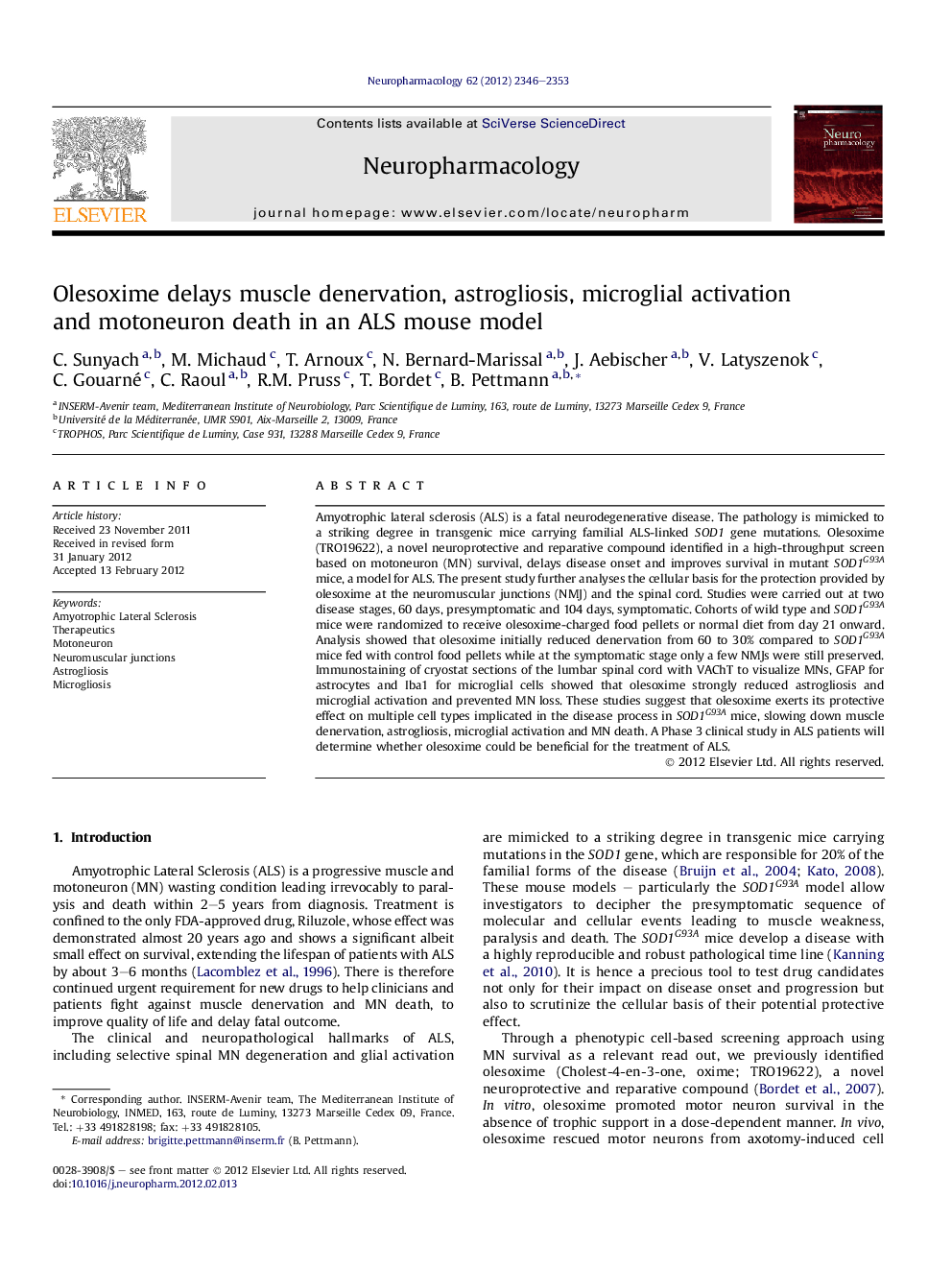| Article ID | Journal | Published Year | Pages | File Type |
|---|---|---|---|---|
| 2493525 | Neuropharmacology | 2012 | 8 Pages |
Amyotrophic lateral sclerosis (ALS) is a fatal neurodegenerative disease. The pathology is mimicked to a striking degree in transgenic mice carrying familial ALS-linked SOD1 gene mutations. Olesoxime (TRO19622), a novel neuroprotective and reparative compound identified in a high-throughput screen based on motoneuron (MN) survival, delays disease onset and improves survival in mutant SOD1G93A mice, a model for ALS. The present study further analyses the cellular basis for the protection provided by olesoxime at the neuromuscular junctions (NMJ) and the spinal cord. Studies were carried out at two disease stages, 60 days, presymptomatic and 104 days, symptomatic. Cohorts of wild type and SOD1G93A mice were randomized to receive olesoxime-charged food pellets or normal diet from day 21 onward. Analysis showed that olesoxime initially reduced denervation from 60 to 30% compared to SOD1G93A mice fed with control food pellets while at the symptomatic stage only a few NMJs were still preserved. Immunostaining of cryostat sections of the lumbar spinal cord with VAChT to visualize MNs, GFAP for astrocytes and Iba1 for microglial cells showed that olesoxime strongly reduced astrogliosis and microglial activation and prevented MN loss. These studies suggest that olesoxime exerts its protective effect on multiple cell types implicated in the disease process in SOD1G93A mice, slowing down muscle denervation, astrogliosis, microglial activation and MN death. A Phase 3 clinical study in ALS patients will determine whether olesoxime could be beneficial for the treatment of ALS.
► We evaluated the therapeutic potential of olesoxime on a murine model of ALS. ► Olesoxime delays gastrocnemius muscle denervation. ► Olesoxime reduces astrogliosis and microgliosis in spinal cord. ► Olesoxime partially protects spinal motoneurons.
